Understanding Gut Disorders
Understand Disease Susceptibility
Metabolomics can aid in investigating the interplay of genetics, diet, and the microbiome in health maintenance and particularly in complex, multifactorial diseases of the digestive tract. Therefore, this cutting-edge technology can reveal actionable insights about the state of health offering tremendous value to understanding disease susceptibility, as well as treatment approaches.
Decipher Mechanisms in the Gastrointestinal Tract
Identify Gastrointestinal Disease Biomarkers
See how Metabolon can advance your path to preclinical and clinical insights
Metabolomics Panels for Gastrointestinal Applications
Bile Acids Targeted Panel
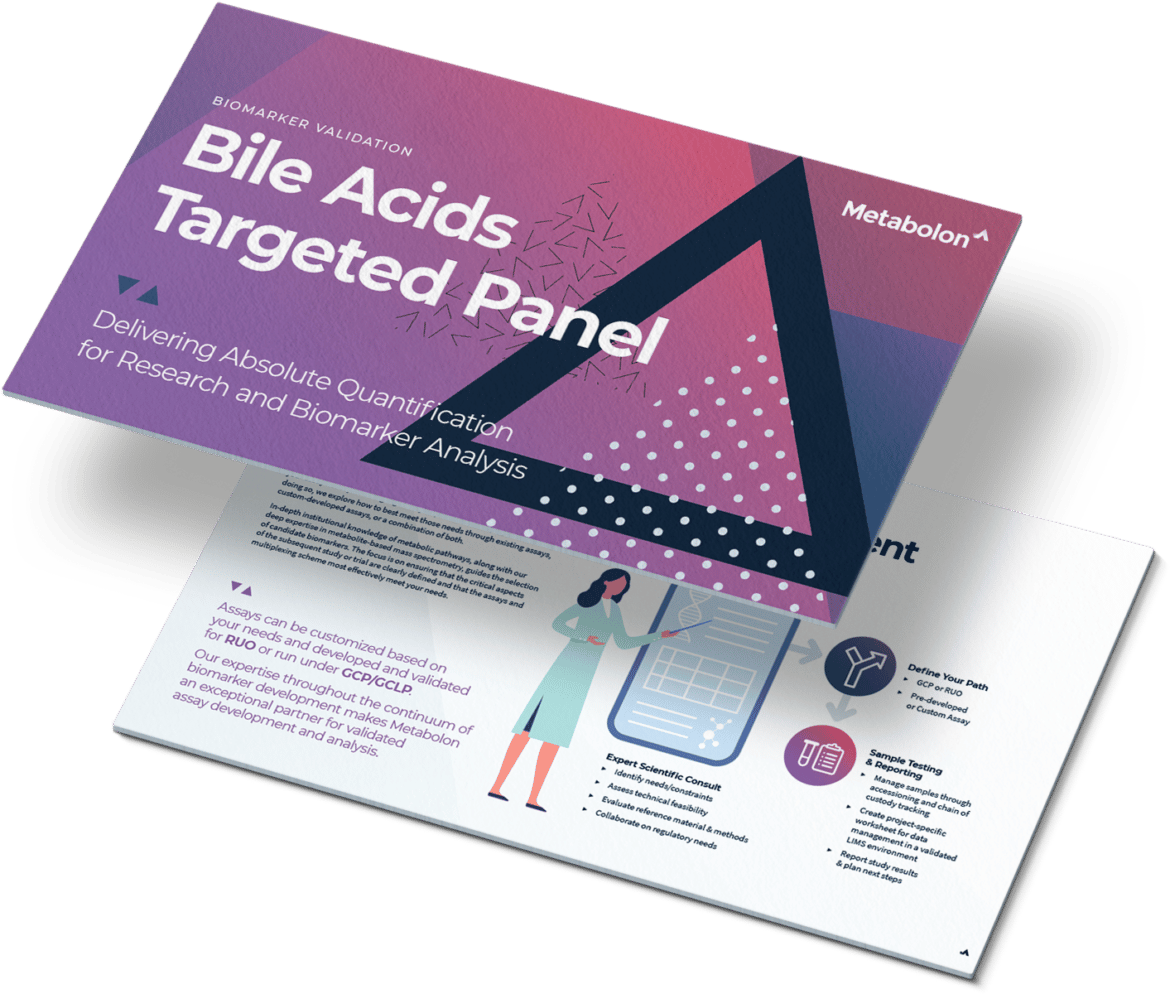
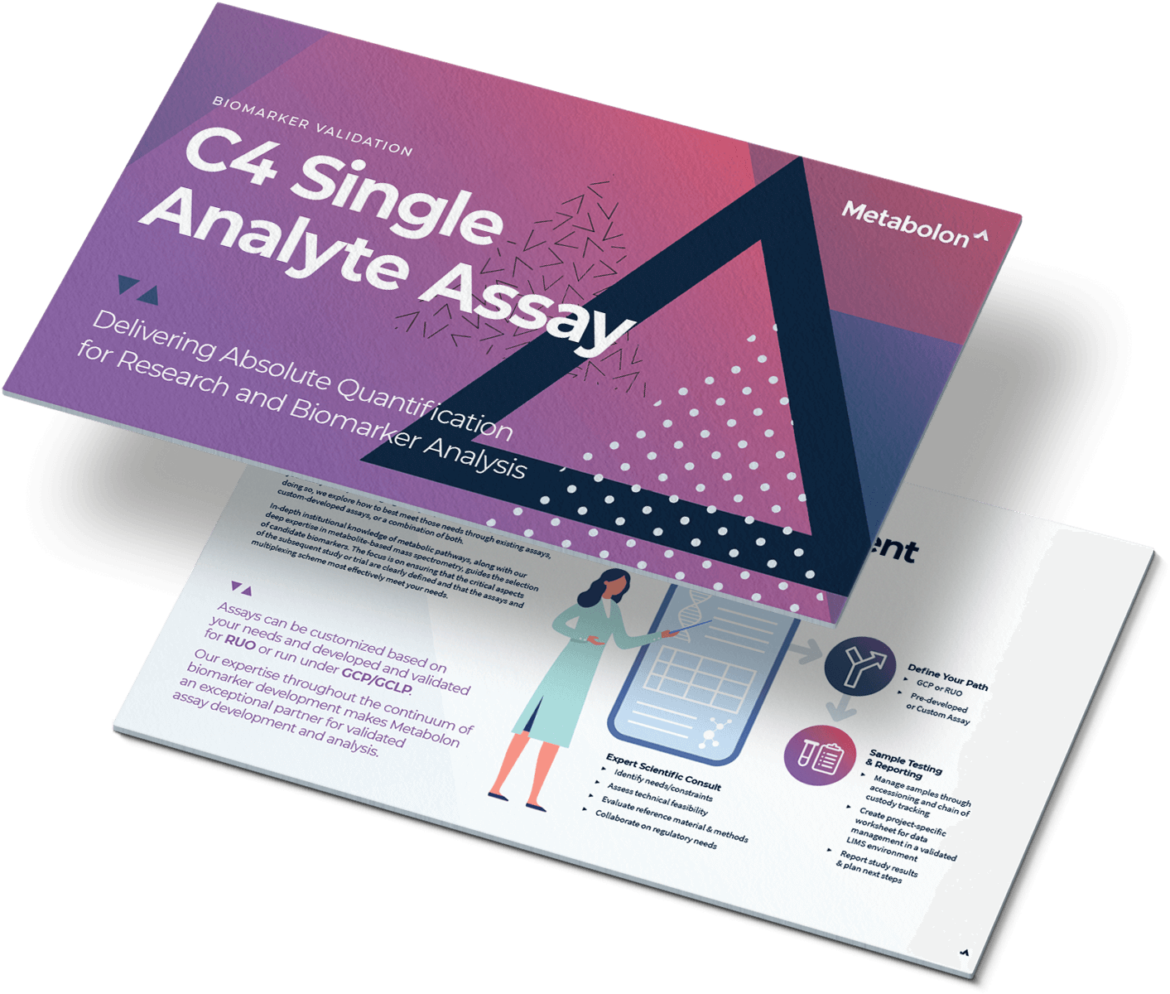
C4 Single Analyte Assay
Indoles/Uremic Toxicity Targeted Panel
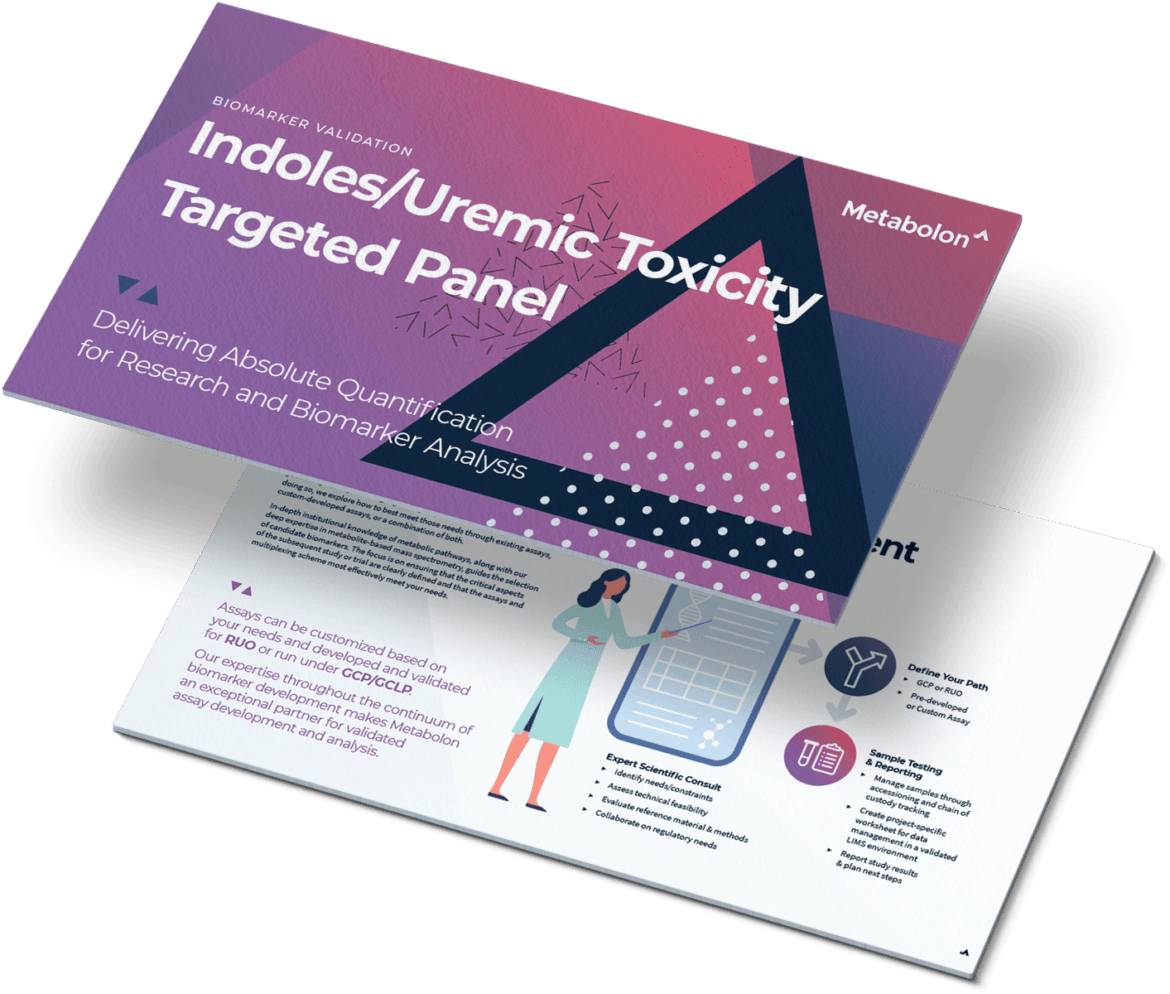
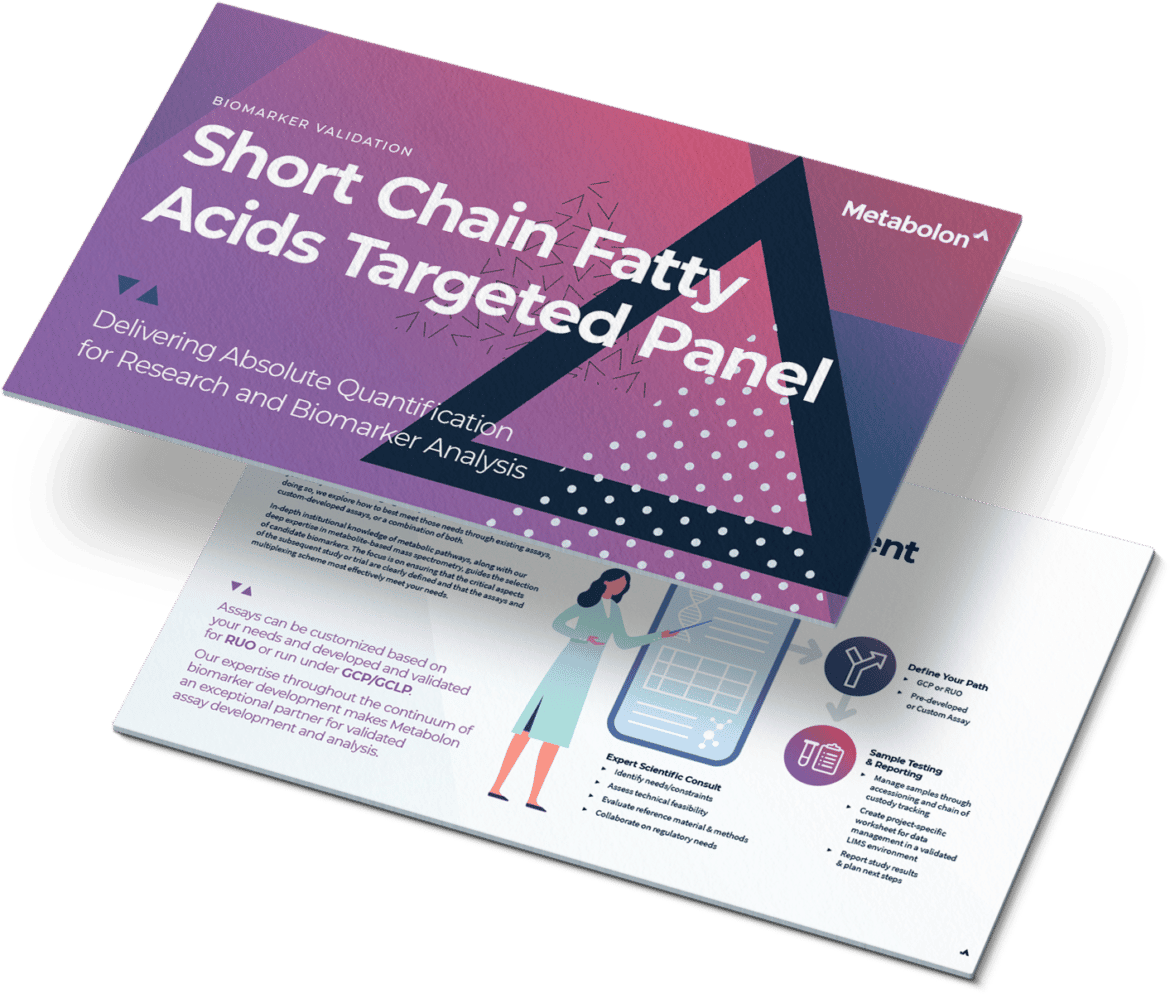
Short Chain Fatty Acids Targeted Panel
Tryptophan/Kynurenine Ratio Targeted Panel
The kynurenine/tryptophan ratio has been used to reflect the activity of the tryptophan-degrading enzyme indoleamine 2,3-dioxygenase (IDO) in cellular inflammatory response related to symptoms of depression, schizophrenia, and other neurological disease.
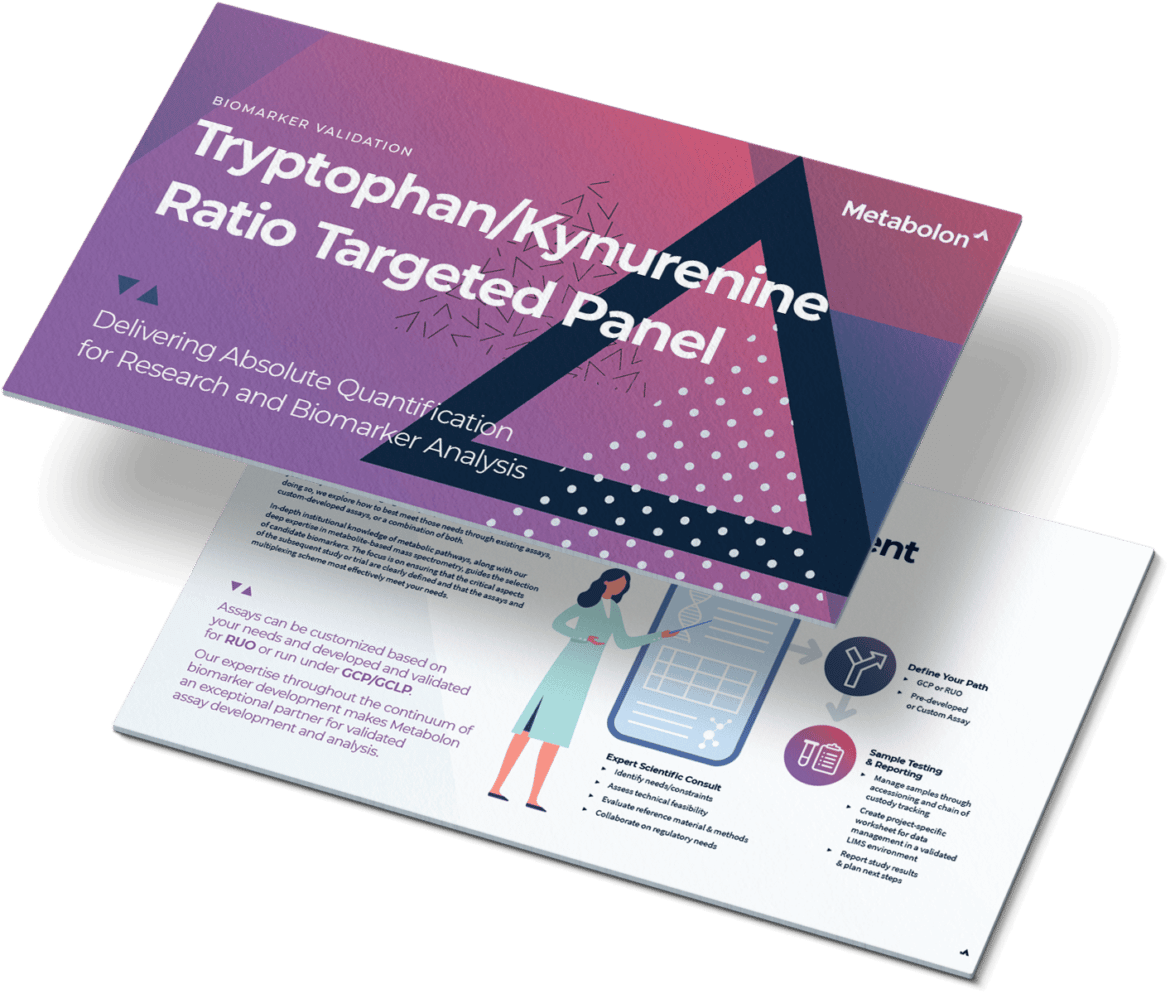
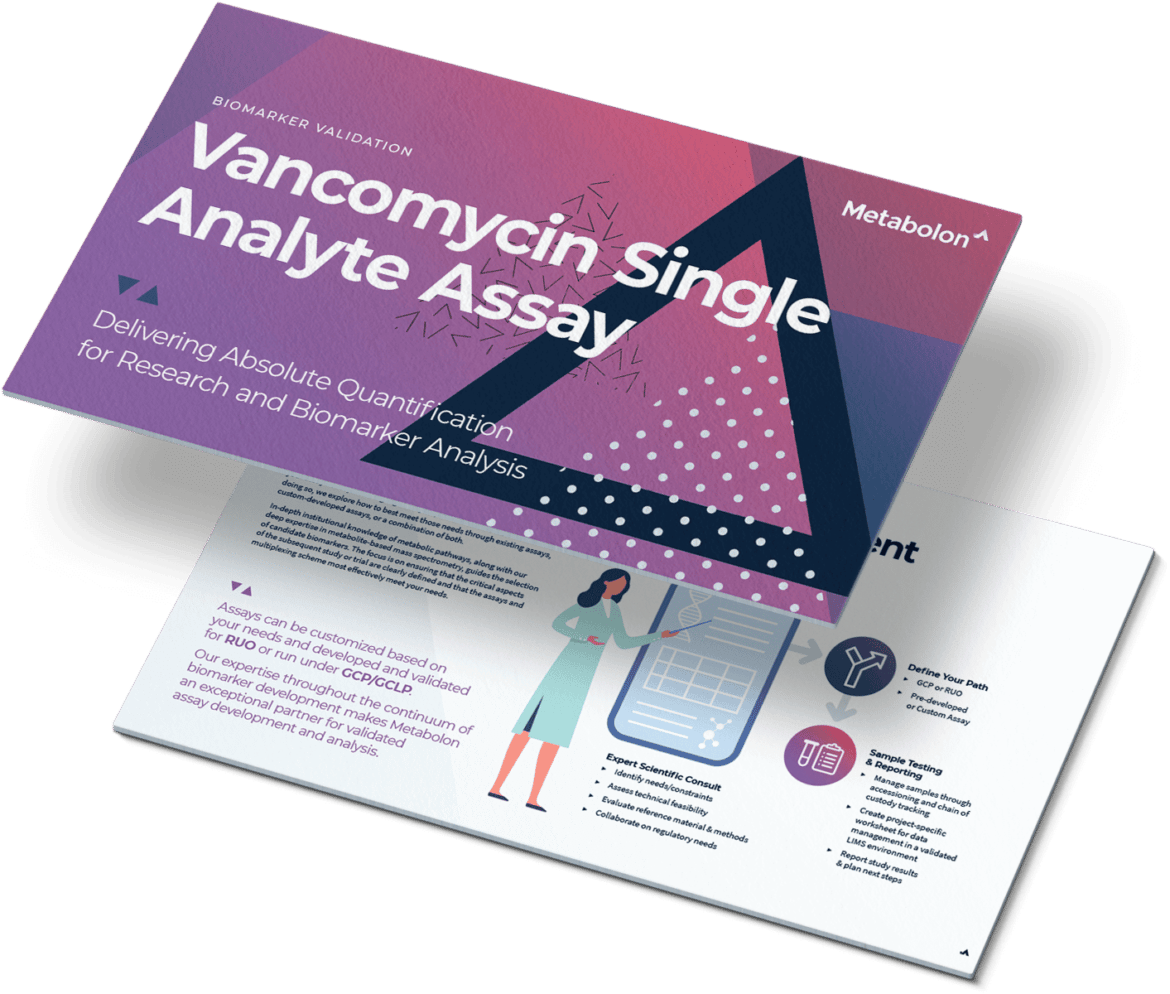
Vancomycin Single Analyte Assay
Metabolon in Action
Beyond Service Provider to Solution Driver
Gut Microbiome and Blood
Clinical Trial Design
The Impact of Probiotic Supplementation on Low Bone Mineral Density (BMD)
Metabolomics identified a number of potential biomarkers that link changes in the gut microbiota to changes in metabolomics that affect bone metabolism in aging women. Supplementation of the probiotic L. reuteri led to an increase in the serum levels of key amino acids that may regulate bone metabolism in older women.
A Biomarker for Ulcerative Colitis
Translational research tools like the Metabolon Global Discovery Panel offer the ability to analyze serum and colonic metabolomic profiles of individuals with gastrointestinal diseases. This technology enables the identification of novel biomarkers (metabolites) that might otherwise go undetected and can be used as therapeutic targets or to assess intestinal disease progression and severity. This study found that indole-3-propionic acid (IPA) can be used as both a biomarker for active ulcerative colitis as well as an indicator of disease remission in human ulcerative colitis.
Interested in Further Studies?
Why Metabolon?
Once you see the full value of metabolomics, the only remaining question is who does it best? While many laboratories have metabolite profiling or analytical chemistry capabilities, comprehensive metabolomics technologies are extremely rare. Accurate, unbiased metabolite identification across the entire metabolome introduces signal-to-noise challenges that very few labs are equipped to handle. Also, translating massive quantities of data into actionable information is slow, if not impossible, for most because proper interpretation takes two things that are in short supply: experience and a comprehensive database.
Only Metabolon has all four core metabolomics capabilities
Coverage
Ability to interrogate thousands of metabolites across diverse biochemical space, revealing new insights and opportunities
Comparability
Ability to integrate the data from different studies into the same dataset, in different geographies, among different patients over time
Competency
Ability to inform on proper study design, generate high‐quality data, derive biological insights, and make actionable recommendations
Capacity
Ability to process hundreds of thousands of samples quickly and cost‐efficiently to service rapidly growing demand
Partner with Metabolon to access:
A library of 5,400+ known metabolites, 2,000 in human plasma, all referenced in the context of biochemical pathways
- That’s 5x the metabolites of the closest competitor
Unparalleled depth and breadth of experience analyzing and interpreting metabolomic data to find meaningful results
- 10,000+ projects with hundreds of clients
- 2,000+ publications covering 500 diseases, including numerous peer-reviewed journals such as Cell, Nature and Science
- Nearly 40 PhDs in data science, molecular biology, and biochemistry
Using our robust platform and visualization tools, our experts are uniquely able to tell you more about your molecule and develop assay panels to help you zero in on the results you need.
Related Gastrointestinal Metabolomics Resources
Contact Us
Talk with an expert
Request a quote for our services, get more information on sample types and handling procedures, request a letter of support, or submit a question about how metabolomics can advance your research.
Corporate Headquarters
617 Davis Drive, Suite 100
Morrisville, NC 27560
Mailing Address:
P.O. Box 110407
Research Triangle Park, NC 27709
References
1. Malinowska JM, Viant MR. Confidence in metabolite identification dictates the applicability of metabolomics to regulatory toxicology. Current Opinion in Toxicology. 2019/08/01/ 2019;16:32-38. doi:10.1016/j.cotox.2019.03.006
2. Frédérich M, Pirotte B, Fillet M, de Tullio P. Metabolomics as a Challenging Approach for Medicinal Chemistry and Personalized Medicine. Journal of medicinal chemistry. 2016;59 19:8649-8666.
3. Zgoda-Pols JR, Chowdhury S, Wirth M, Milburn MV, Alexander DC, Alton KB. Metabolomics analysis reveals elevation of 3-indoxyl sulfate in plasma and brain during chemically-induced acute kidney injury in mice: investigation of nicotinic acid receptor agonists. Toxicol Appl Pharmacol. Aug 15 2011;255(1):48-56. doi:10.1016/j.taap.2011.05.015
4. Wang G, Korfmacher WA. Development of a biomarker assay for 3-indoxyl sulfate in mouse plasma and brain by liquid chromatography/tandem mass spectrometry. Rapid Commun Mass Spectrom. Jul 2009;23(13):2061-9. doi:10.1002/rcm.4111
5. Loomba R, Kayali Z, Noureddin M, et al. GS-0976 Reduces Hepatic Steatosis and Fibrosis Markers in Patients With Nonalcoholic Fatty Liver Disease. Gastroenterology. Nov 2018;155(5):1463-1473.e6. doi:10.1053/j.gastro.2018.07.027

